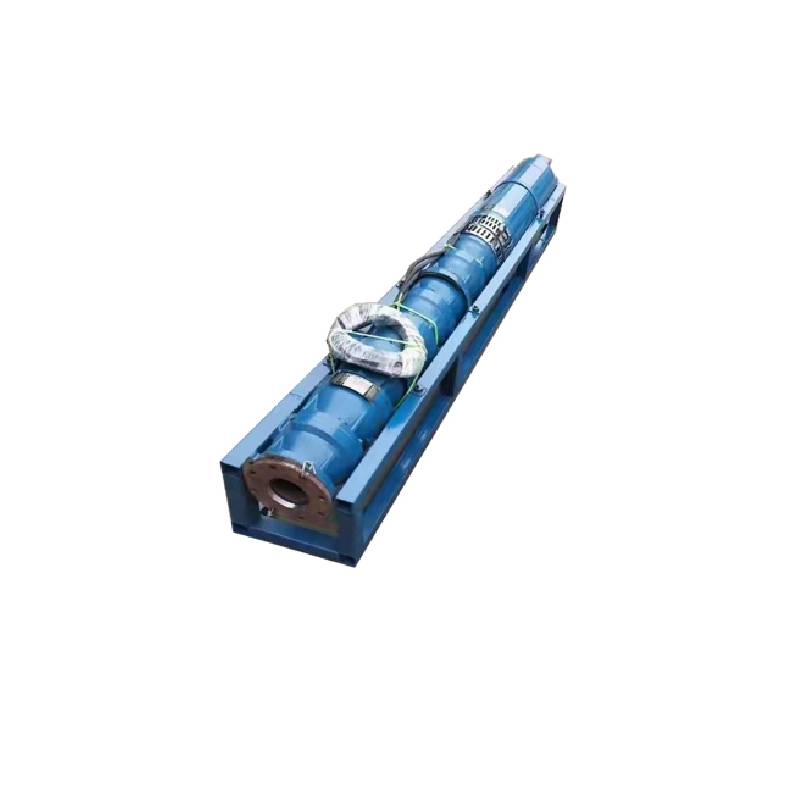jan . 02, 2025 07:35 Back to list
submersible water motor
Exploring Submersible Water Motors Efficiency Beneath the Surface
Submersible water motors are a critical innovation in the field of fluid dynamics and water management. These motors are designed to operate while submerged in water, which makes them essential for a variety of applications, including agriculture, municipal water supply, and industrial processes. Understanding the functionality, benefits, and applications of submersible water motors can provide insights into their role in modern water management solutions.
Functionality and Design
At its core, a submersible water motor is an electric motor that is hermetically sealed and designed to be submerged in water. The primary purpose of these motors is to drive a pump that moves water from a lower to a higher elevation or to circulate water within a system. Unlike traditional motors, which are situated above the water source, submersible motors eliminate the need for suction — they push water to the surface directly from within the source.
The design of submersible motors varies depending on their intended application, but they typically consist of a motor body, an impeller, and a pump. The motor generates mechanical energy, which is transferred to the impeller, converting it into kinetic energy. As water enters the pump and passes through the impeller, it is accelerated and expelled, creating a steady flow.
One of the pivotal aspects of submersible water motors is their waterproof construction. This is accomplished through the use of special seals and materials that can withstand prolonged exposure to water without corroding or degrading. Additionally, these motors are often equipped with thermal protection systems to prevent overheating, ensuring operational reliability even in challenging environments.
Efficiency and Benefits
The efficiency of submersible water motors is one of their most significant advantages. Since they operate underwater, there is no need for priming or the energy losses associated with traditional pumps that rely on atmospheric pressure to draw water. Submersible motors are capable of higher efficiencies, which translates to lower energy consumption and improved operational costs.
Furthermore, these motors are less prone to cavitation — a phenomenon that can damage equipment and reduce efficiency — because they maintain a consistent supply of water. This feature increases the lifespan of the motor and the associated pump. Additionally, submersible motors operate quietly compared to above-ground pumps, making them suitable for residential areas and noise-sensitive environments.
submersible water motor

Applications in Various Sectors
Submersible water motors are utilized across diverse sectors. In agriculture, they are crucial for irrigation systems, drawing groundwater for crops while ensuring efficient water use. Their ability to operate at various depths makes them ideal for different soil types and terrains.
In municipal water supply systems, submersible motors play a vital role in delivering clean drinking water to communities. They are instrumental in borewell pumping systems, where groundwater is extracted and treated before distribution. Additionally, these motors are employed in wastewater treatment facilities, where they assist in moving sewage and stormwater, ensuring efficient treatment and disposal processes.
In industrial contexts, submersible motors are often used in applications such as cooling systems, aquaculture, and mining operations. They can handle large volumes of water and can be designed to accommodate specific industrial requirements, such as temperature, chemical composition, and flow rates.
Challenges and Future Developments
While submersible water motors offer substantial benefits, they are not without challenges. Issues such as maintenance accessibility, potential electrical failures, and the impact of environmental conditions can affect their performance. However, advancements in technology are addressing these challenges through improved materials, monitoring systems, and energy-efficient designs.
The future of submersible water motors looks promising as the demand for efficient water management systems continues to grow. With increasing awareness of sustainability and resource conservation, innovations in submersible technology will likely focus on enhancing efficiency, robustness, and adaptability.
In conclusion, submersible water motors are an essential component of modern water management systems. Their efficiency, versatility, and quiet operation make them indispensable in various applications, from agriculture to municipal water supply and industrial processes. As technology advances and the need for sustainable solutions rises, submersible water motors will continue to play a crucial role in ensuring efficient water management for generations to come.
-
submersible-sump-pump-auto-drainage-for-crawlspaces
NewsAug.22,2025
-
solar-powered-stainless-steel-submersible-well-pump-setup
NewsAug.22,2025
-
stainless-steel-well-pump-flow-rate-optimization
NewsAug.22,2025
-
water-filled-submersible-pump-fish-farm-oxygenation
NewsAug.22,2025
-
submersible-pump-in-aquaculture-and-fish-farming
NewsAug.22,2025
-
deep-well-submersible-pump-for-drought-areas
NewsAug.22,2025
-
 submersible-sump-pump-auto-drainage-for-crawlspacesCrawlspaces, those narrow areas beneath homes, are prone to water accumulation due to leaks, groundwDetail
submersible-sump-pump-auto-drainage-for-crawlspacesCrawlspaces, those narrow areas beneath homes, are prone to water accumulation due to leaks, groundwDetail -
 solar-powered-stainless-steel-submersible-well-pump-setupHarnessing solar energy to power stainless steel submersible well pumps is a sustainable and coDetail
solar-powered-stainless-steel-submersible-well-pump-setupHarnessing solar energy to power stainless steel submersible well pumps is a sustainable and coDetail -
 stainless-steel-well-pump-flow-rate-optimizationIn various applications like agriculture, domestic water supply, and industrial use, the flow rate oDetail
stainless-steel-well-pump-flow-rate-optimizationIn various applications like agriculture, domestic water supply, and industrial use, the flow rate oDetail
